Today Current Affairs: 9th July 2022 for UPSC IAS exams, State PSC exams, SSC CGL, State SSC, RRB, Railways, Banking Exam & IBPS, etc
Table of Contents
Mission Vatsalya:

Government released guidelines for Mission Vatsalya and asked states to not temper with the name of the scheme in order to access Central funds and benefits under it.
- Mission Vatsalya is one of the new triads of schemes along with Mission Shakti, and Poshan 2.0, which aims at securing a healthy and happy childhood for every child. (under Women and child development ministry)
- It focuses on Child Protection Services and child welfare services.
- It is essentially a renamed version of the pre-existing scheme called Child Protection Services.
- Objectives of the Mission:
- To secure a healthy and happy childhood for every child in India.
- To foster a sensitive, supportive and synchronized ecosystem for the development of children.
- To assist States/UTs in delivering the mandate of the Juvenile Justice Act 2015.
New Sherpa Of G-20:

Former Niti Aayog CEO Amitabh Kant will be the new Sherpa of G-20.
- Commerce minister Piyush Goel will give up the position as Sherpa of G-20.
- With the G-20 presidency coming to India, a full-time Sherpa is required who would be needed to devote a lot of time to meetings that will be held in different parts of the country
- A Sherpa is a personal representative of the leader of a member country at an international Summit meeting such as the G8, G20, the Nuclear Security Summit etc.
- The Sherpa engages in planning, negotiation and implementation tasks through the Summit.
- They coordinate the agenda, seek consensus at the highest political levels, and participate in a series of pre-Summit consultations to help negotiate their leaders’ positions.
- Sherpas are career diplomats or senior government officials appointed by the leaders of their countries.
- The term is derived from the Nepalese Sherpa people, who serve as guides for mountaineers in the Himalayas.
Mangarh Hillock As a Monument Of National Importance:
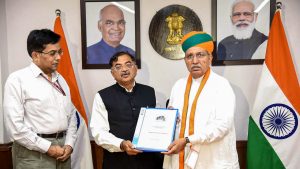
A report by the National Monuments Authority (NMA) called for the Mangarh hilltop in Rajasthan to be designated as a national monument in honor of 1500 Bhil tribal freedom fighters.
Monuments of National Importance:
- National ancient Monuments are defined under the Ancient Monument and Archaeological Sites and Remains Act,1958.
- The Act defines Ancient Monument as any structure or monument or any cave, rock sculpture, an inscription that is of historical, or archaeological interest.
- The Central Government is authorised to maintain, protect and promote the monuments.
Mangarh Hillock:
- The hillock, situated at the Gujarat-Rajasthan border, is a site of a tribal uprising where a massacre of over 1500 Bhil tribal freedom fighters took place in 1913.
- The place is also known as the Adivasi Jallianwala, and there has been a demand to build a memorial.
- On 17th November, 1913, British forces opened fire on tribals gathered at the site who were holding a meeting in protest, led by a leader from the community Govind Guru, killing over 1,500.
Safeguarding Of The Intangible Cultural Heritage (ICH):

India has been elected to the Intergovernmental Committee of UNESCO’s 2003 Convention for the Safeguarding of the Intangible Cultural Heritage (ICH) for the 2022-2026 cycle.
- India has served as a member of the ICH Committee twice — from 2006 to 2010 and from 2014 to 2018.
- Earlier, Durga Puja in Kolkata was inscribed on the UNESCO’s Representative List of the Intangible Cultural Heritage (ICH) of Humanity.
- It will help India focus on fostering community participation, strengthening international cooperation through intangible heritage, promoting academic research on intangible cultural heritage and aligning the work of the Convention with the UN Sustainable Development Goals.
- India will have the opportunity to closely monitor the implementation of the 2003 Convention.
- India shall endeavour to encourage international dialogue within the State Parties to the Convention to better showcase the diversity and importance of living heritage.
UNESCO’s Convention for Safeguarding the Intangible Heritage:
- The Convention of the Safeguarding of the Intangible Cultural Heritage was adopted by the United Nations Educational, Scientific and Cultural Organization (UNESCO) in 2003 and entered into force in 2006.
- It comprises 24 members and is elected in the General Assembly of the Convention according to the principles of equitable geographical representation and rotation.
- Members of the Committee are elected for a term of four years.
- Purpose:
- To safeguard the expressions of intangible cultural heritage that are endangered by the processes of globalization.
- To ensure respect for the intangible cultural heritage of the communities, groups and individuals.
- To raise awareness at the local, national and international levels of the importance of intangible cultural heritage.
- Publications:
- Representative List of the Intangible Cultural Heritage of Humanity.
- List of Intangible Cultural Heritage in Need of Urgent Safeguarding.
- Register of good safeguarding practices.
Intangible Cultural Heritage:
- Intangible cultural heritage is the practices, expressions, knowledge and skills that communities, groups and sometimes individuals recognise as part of their cultural heritage.
- Also called living cultural heritage, it is usually expressed in one of the following forms:
- Oral Traditions
- Performing Arts
- Social Practices
- Rituals and Festive events
- Knowledge and Practices concerning nature and the universe
- Traditional Craftsmanship
Derecho : Storm System
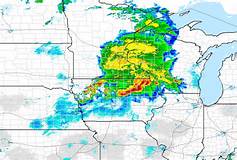
A few States of US were hit by a storm system called a Derecho, turning Sky Green.
- They mostly occur across central and eastern parts of the United States. In 2009 “Super Derecho” was one of the “most intense and unusual derechos ever observed” in the US as it swept from Kansas to Kentucky (US States) with wind speeds reaching up to 170 km/hr.
- In 2010, Russia witnessed its first documented derecho. They have also swept through Germany and Finland, and more recently in Bulgaria and Poland.
- A Derecho is “a widespread, long-lived, straight-line windstorm” that is associated with a “band of rapidly moving showers or thunderstorms”.
- The name comes from the Spanish word ‘la derecha’ which means ‘straight’.
- Straight-line storms are those in which thunderstorm winds have no rotation unlike a tornado. These storms travel hundreds of miles and cover a vast area.
- It is a warm-weather phenomenon that generally occurs in June and July.
- They are a rare occurrence as compared to other storm systems like tornadoes or hurricanes.
- Types:
- Progressive:A progressive derecho is associated with a short line of thunderstorms that may travel for hundreds of miles along a relatively narrow path.It is a summer phenomenon.
- Serial: A serial derecho, on the other hand, has an extensive squall line – wide and long – sweeping across a large area.It usually occurs during spring or fall.
- Hybrid:Hybrid ones have the features of both progressive and serial derechos.
Colombo Security Conclave:

The sixth Deputy National Advisers’ meeting of the Colombo Security Conclave held recently resolved to combat jointly the increasing threats related to maritime safety, terrorism, trafficking and organised crime affecting partner nations.
- A road map for cooperation was discussed at the meeting attended by India, the Maldives, Mauritius, and Sri Lanka.
- Representatives of Bangladesh and the Seychelles — the two observer nations in the conclave — also shared their views on the occasion.
- The five broad areas of cooperation to strengthen regional security are –
- maritime safety and security,
- countering terrorism and radicalisation,
- combating trafficking and transnational organised crime,
- cyber security and protection of critical infrastructure and technology, and
- humanitarian assistance and disaster relief.
Global Forgiveness Day:
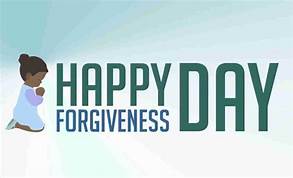
Global Forgiveness Day is observed on 7th of July every year to celebrate goodwill among people and it gives us a chance to set things right and make our relationships stronger.
- In 1994, The Christian Embassy of Christ’s Ambassadors founded National Forgiveness Day in British Columbia.
- The day was later renamed ‘Global Forgiveness Day.
- The art of practicing forgiveness after an offense, and let go of your negative emotions, is a key principle taught by all religions across the globe.
- Forgiveness is important not only in our relationships but also in our personal lives.
The State Of Food Security And Nutrition In The World (SOFI) 2022:

FAO, International Fund for Agriculture Development, UNICEF, UN world food Programme and WHO have jointly released SOFI 2022.
Report:
On Global Level:
- The world is moving further away from its goal of ending hunger (SDG 2: No Hunger), food insecurity and malnutrition in all its forms by 2030. (over 800 million were affected by hunger in 2021)
- Over 8% will still face hunger by 2030 even if the global economic recovery is taken into consideration.
- The gender gap in food insecurity is rising: It has continued to rise in 2021 — 31.9 per cent of women in the world were moderately or severely food insecure, compared with 27.6 per cent of men.
- Major reasons are Conflict, supply chain disruption, climate extremes, Disasters, growing inequalities and slow economic recovery after the pandemic.
On India:
- India has high undernourishment (about 16% of the population), wasting (about 17%), stunting (about 31%) and low exclusive breastfeeding practice (only 58%)
Kharchi Festival:
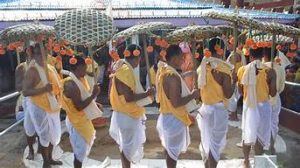
Kharchi Puja is a Hindu festival from Tripura, the festival involves the worship of the fourteen gods forming the dynasty deity of the Tripuri people.
- Tracing its etymology, ‘khar’ means sin and ‘çhi’ means cleaning.
- Therefore, together the name translates to – cleaning of sins.
- The temple of the 14 gods was built during the reign of Maharaja Krishna Manikya.
- This is an age-old tradition being celebrated from some time around 1760 AD and since has been an annual occasion for the community to come together and soak in the festivities.
PM-Svanidhi Scheme:

12-13% NPAs in loans given to street vendors under Prime Minister’s Street Vendors AtmaNirbhar Nidhi (PM-Svanidhi) scheme (Ministry of Housing and Urban Affairs Minister)
- Svanidhi Mahotsav: a series of cultural events for street vendors and the public, to be rolled out in 75 cities
- At first vendors can avail of loans up to ₹10,000 each. After repayment of the first loan, the vendors are eligible for a second loan of ₹20,000 and then the third loan of ₹50,000.
- On timely/early repayment of the loan, an interest subsidy of 7% per annumwill be credited to the bank accounts of beneficiaries through direct benefit transfer on a six-monthly basis.
- The scheme incentivises digital transactions by the street vendors through monthly cash back.
- It will integrate the UdyamiMitra portal of SIDBI for credit management and the PAiSA portal of MoHUAto administer interest subsidy automatically.
Guidelines To Prevent False Or Misleading Advertisements:

The Central Consumer Protection Authority (CCPA) recently issued guidelines to prevent false or misleading advertisements.
Guidelines:
Non-misleading and valid Advertisements.
- An advertisement can be considered non-misleading if it contains true and honest representation of goods and does not exaggerate the accuracy, scientific validity or practical usefulness or capability.
- In case of unintentional lapse, the advertisement may still be considered as valid if the advertiser has taken prompt action in letting the consumer know the deficiency.
Surrogate Advertisements:
- Surrogate advertisement” refers to the advertisement of goods in the shadow of other goods.
- For example, the advertisement of tobacco in the garb of pan masala.
- No surrogate advertisement or indirect advertisement shall be made for goods or services whose advertising is otherwise prohibited or restricted by law.
- No circumventing of such prohibition or restriction and portraying it to be an advertisement for other goods or services shall be allowed.
Advertisements Targeting Children:
- Advertisements that condone, encourage, inspire or unreasonably emulate behaviour that could be dangerous for children or take advantage of children’s inexperience, credulity or sense of loyalty etc. have been prohibited.
- It goes without saying that advertisements tend to influence children’s buying behaviour and encourage them to consume unhealthy goods, or develop negative feelings toward healthy goods.
Disclaimers in Advertisements:
- The guidelines have also introduced the need to have “disclaimers in advertisements” to clarify a claim made in such advertisement or make qualifications or resolve ambiguities therein in order to explain such claim in further detail.
- Moreover, the advertiser must not “attempt to hide material information with respect to any claim made in such advertisement, the omission or absence of which is likely to make the advertisement deceptive or conceal its commercial intent”.
Duties:
- The guidelines also impose duties on the manufacturers, service providers and advertising agency to not claim and make comparisons in an advertisement which relate to matters of objectively ascertainable facts.
- Moreover, the advertisement must be framed to gain the trust of the consumers and not to “abuse the trust of consumers or exploit their lack of experience or knowledge”.
Critical Minerals:
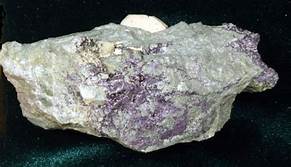
India and Australia decided to strengthen their partnership in the field of projects and supply chains for critical minerals.
- Australia confirmed that it would commit USD 5.8 million to the three-year India-Australia Critical Minerals Investment Partnership.
- Critical minerals are elements that are the building blocks of essential modern-day technologies and are at risk of supply chain disruptions.
- Based on their individual needs and strategic considerations, different countries create their own lists.
- However, such lists mostly include graphite, lithium and cobalt, which are used for making EV batteries; rare earth that is used for making magnets and silicon which is a key mineral for making computer chips and solar panels.
- India’s Department of Science and Technology, in collaboration with the Council on Energy, Environment and Water, drafted the Critical Minerals Strategy for India in 2016, with a focus on India’s resource requirements till 2030.
- The Indian Critical Minerals Strategy has identified 49 minerals that will be vital for India’s future economic growth.




